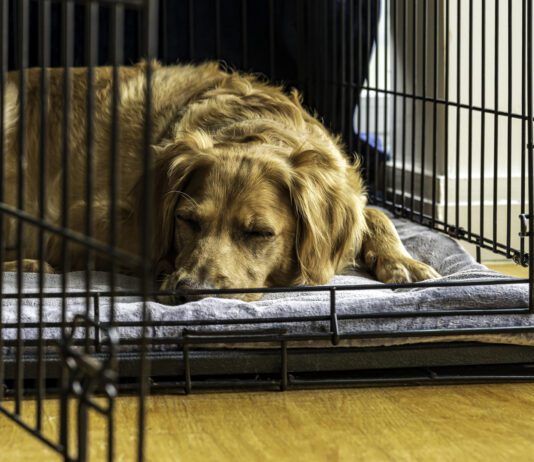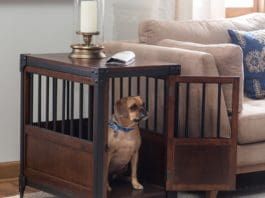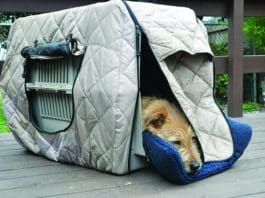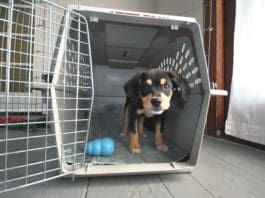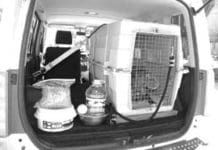Dog Crate Anxiety
Properly used, the crate is a marvelous training and management tool. Improperly used, it can be a disaster. Overcrating, traumatic, or stimulating experiences while crated, improper introduction to the crate, and isolation or separation anxieties are the primary causes of crating disasters. If, for whatever reason, your dog is not a fan of the artificial den you've provided for him, and assuming he can't be trusted home alone uncrated, here are some things you can do...
The Benefits of Crate Training Your Dog From an Early Age
I am a huge fan of crate training for dogs. I think the ability to spend an extended amount of time in an enclosed space quietly and calmly is a valuable life skill for dogs. And it certainly has dozens of benefits for us, too. A crate and crate-trained dog ensure that you and your dog will be welcome at most friends' and relatives' homes. I recently stayed at a friendS' house over the holidays, with my foster dog! She doesn't have enough training or self-control to abstain from chasing a strange cat, eating the cat's food, chewing on the furniture, or stealing food off the table, but none of these things happened, because she was happy to spend all of her unsupervised time in their home in her crate.
Driving Safely with Your Dog
When I'm driving on the road and see a dog in someone else's car, it makes me smile. I love it when people care enough about their dogs to chauffeur them around town. I love it even more when the dog is in a crate or seat belted in place. My smile quickly vanishes, however, if the dog has her head stuck out the window, is sitting in the driver's lap, darting back and forth across the seats, or worse, riding loose in the back of an open pickup truck. And the ultimate crime leaving a dog in a hot car motivates me to grab my cell phone and call out the animal cops. As much as we love our dogs and want them with us all the time, we have an incontrovertible obligation to transport them safely, for their own welfare as well as ours, and that of other drivers on the roads. All dogs, large and small, should learn to ride politely in their cars. There's a long list of safety hazards concomitant with having an unrestrained obstreperous canine in a moving vehicle.
Dog Crating Difficulties
provide your puppy (or new dog) with frequent opportunities to relieve himself in an appropriate place. Don't leave him in the crate longer than he can "hold it."üAs a first step with dogs who are reluctant to go in their crates
Properly Crate Training Your Dog
Crates are perhaps second only to choke collars as the most misused training equipment forced upon dogs. However, unlike choke collars, there is a terrific training principle behind the use of crates. A crate, or, in other words, short-term close confinement, can be used to help dogs teach themselves two very important skills. The first is eliminating only when and where it is appropriate. The second skill is keeping out of trouble behaving appropriately in the house. Without these two skills, a dog doesn't have much of a chance in this world.
Crate Training Made Easy
The crate is a sturdy plastic, fiberglass, wood, metal or wire box just big enough for a dog to stand up, turn around and lie down in comfortably. It can be used with the door open, at your convenience, or with the door closed, when mandatory confinement is called for. When the crate is properly introduced using positive training methods, most dogs love their crates. Canines are den animals and a crate is a modern den a dog's personal portable bedroom that he can retire to when he wants to escape from the trials and tribulations of toddlers and other torments. He can take it with him when he stays at boarding kennels, and when he travels with you and sleeps in hotels and motels.
Portable Dog Crates are Invaluable Travelling Tools
The crate has long been proven to be an invaluable in-home dog behavior management tool. It is also extremely useful on the road. For a long time, the only downside of crates has been that they are big, heavy, and awkward to lug around. A crate big enough for a Labrador Retriever, Rottweiler or (imagine) Great Dane won't even fit in most cars which is one reason why a lot of big-dog owners drive vans and SUVs!


